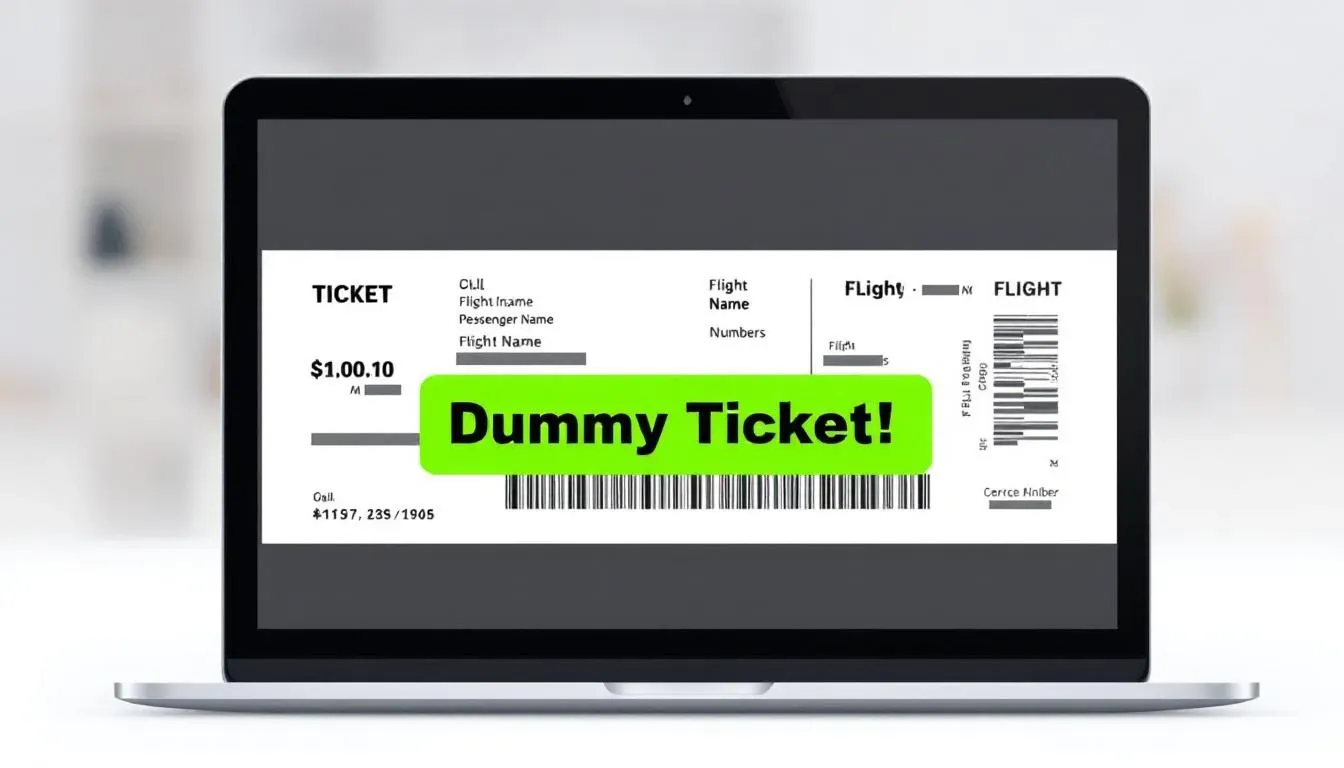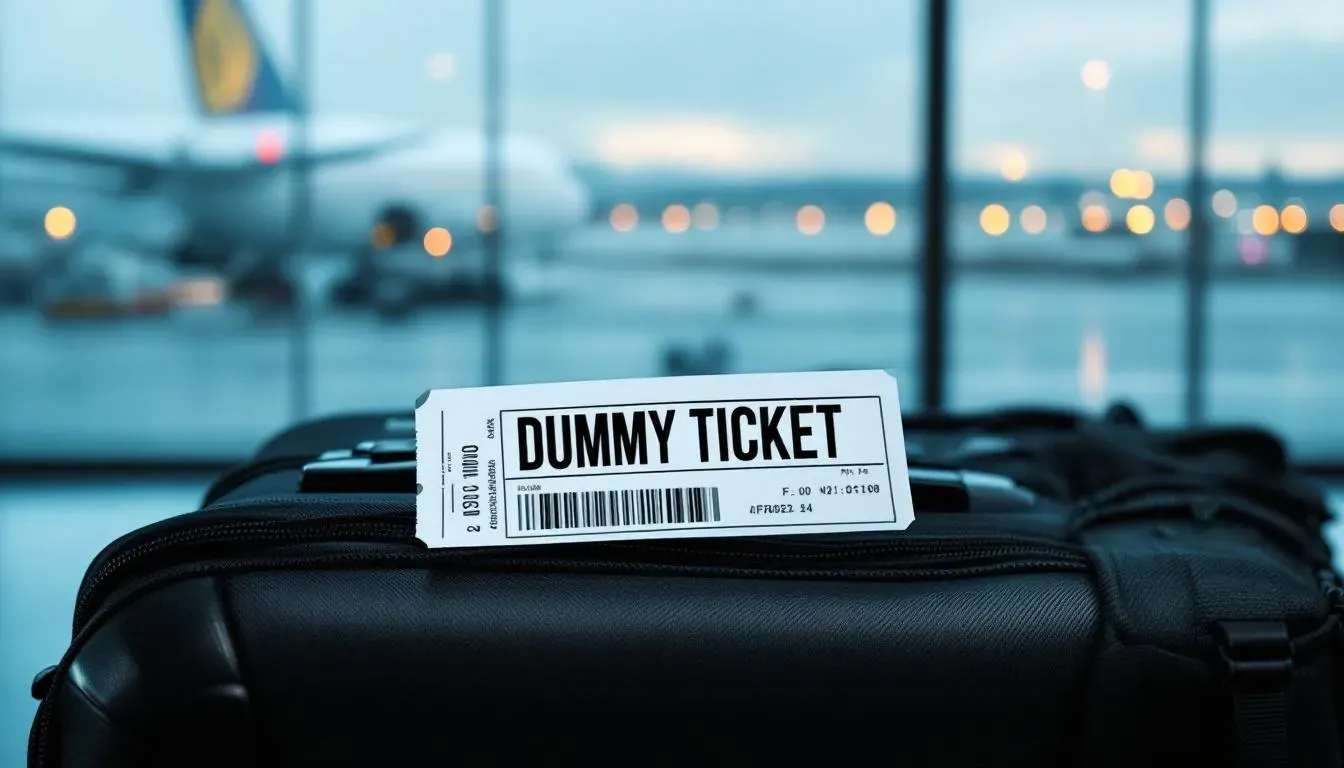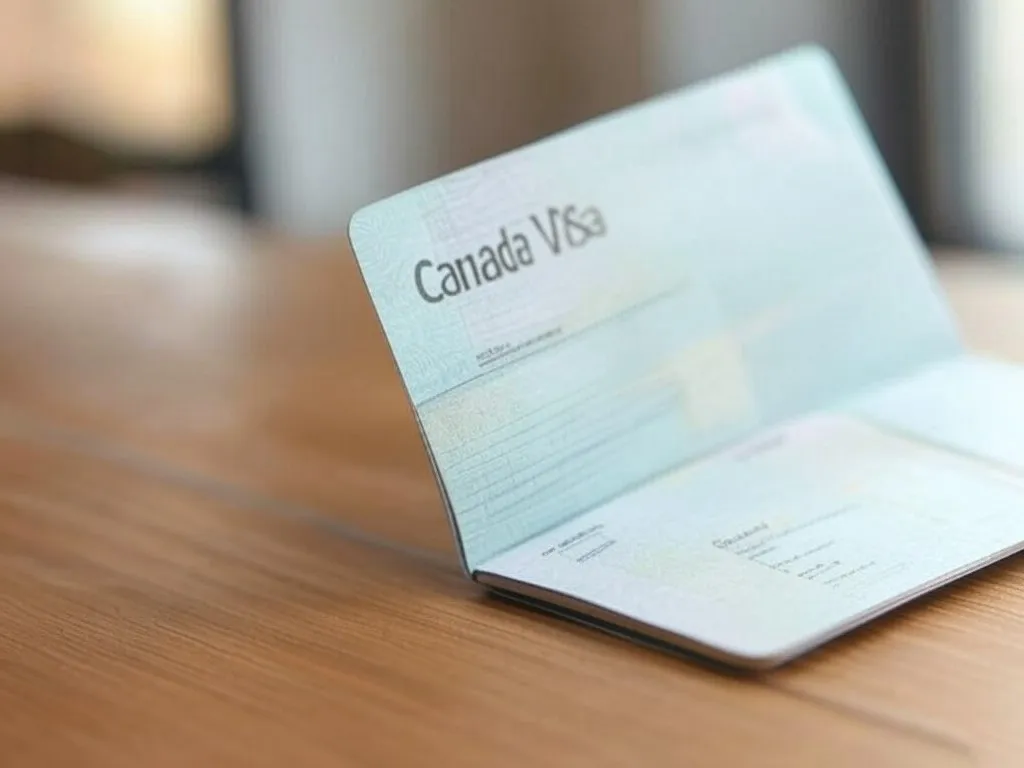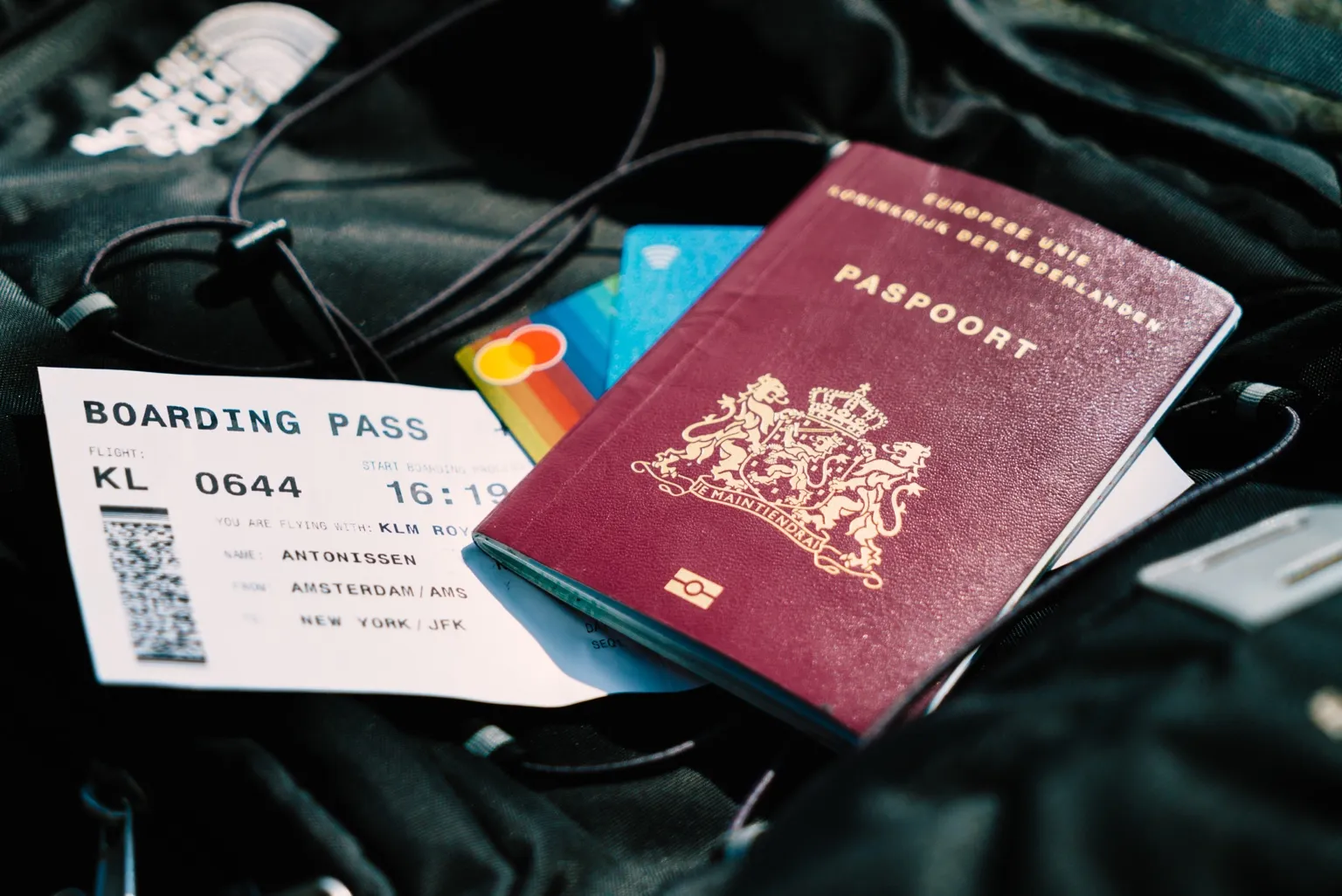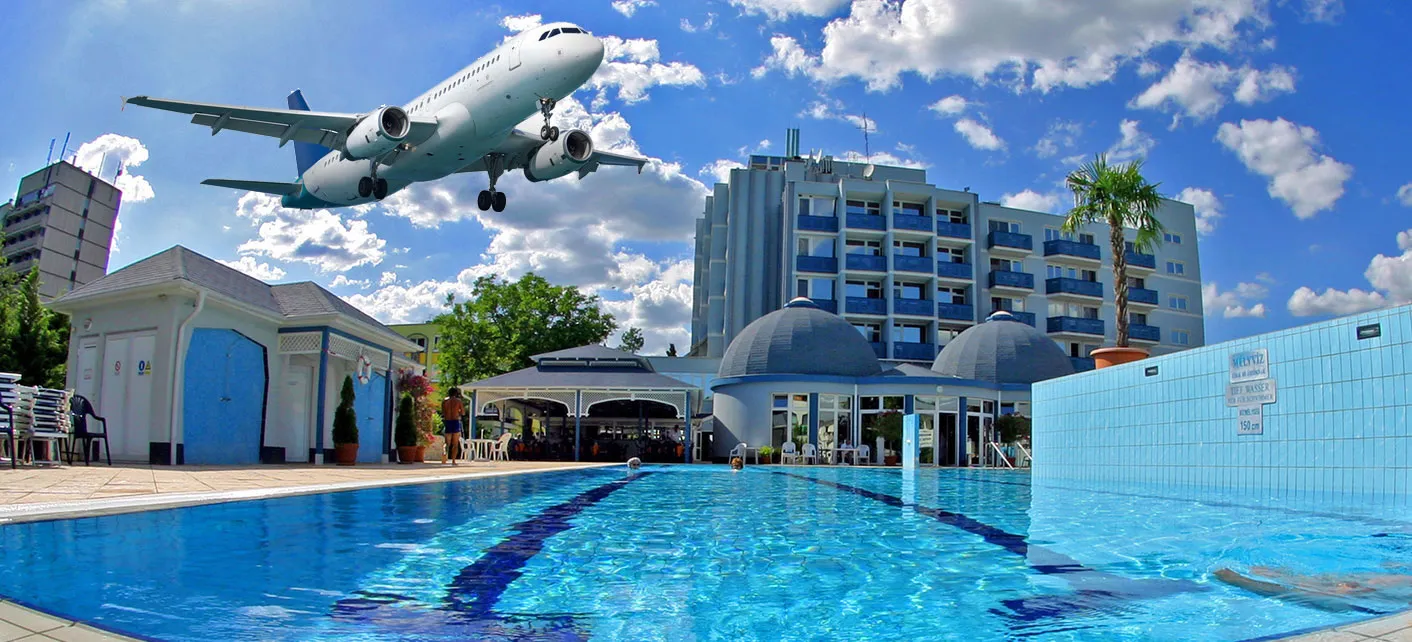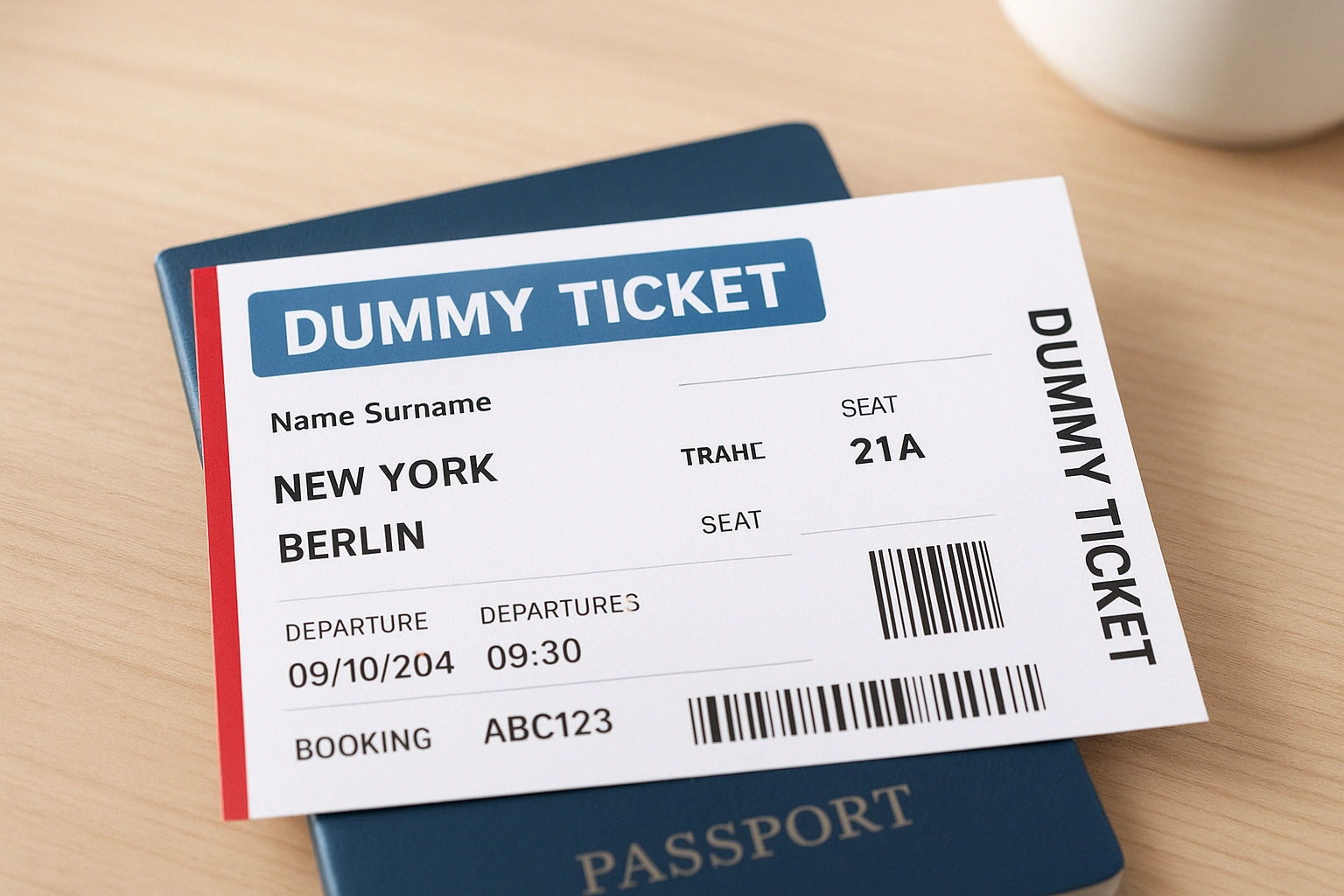Fast Dummy Flight Reservation for Schengen (Live PNR)
You don’t need to gamble on a pricey ticket before your visa. Most Schengen consulates want to see your intended route and dates as proof of travel plans. They use this to check that your purpose, accommodation, and budget make sense. A dummy ticket or hold usually does the job when it’s consistent, dated, and verifiable. That keeps your options open while you wait for a decision. For more details on visa proofs, check our FAQ.
Here, we’ll show where flight plans sit in the standard checklist for Indian applicants, then walk you through the application flow from appointment to biometrics and decision. We’ll compare acceptable proofs, explain how officers evaluate your itinerary with hotels and funds, and share timing tips that fit real Indian timelines. You’ll know when to reserve, when to tweak, and when to finally buy. Get your verifiable itinerary in minutes—start your dummy ticket booking now. Explore related tips in our blogs.
flight reservation for Schengen visa is one of the most useful documents travelers prepare when organizing international trips. While Schengen embassies do not ask you to buy a fully paid ticket upfront, they do expect a verifiable proof of travel intent that clearly shows your planned entry and exit dates. This helps demonstrate that you will follow your schedule and return on time.
Using a professionally issued and verifiable flight reservation for Schengen visa is the safest and most convenient way to meet this requirement without financial risk, especially for short-stay visa applications across all 27 Schengen countries.
Last updated: December 2025 — verified against the latest traveler documentation practices and Schengen consular guidelines.
Learn about our team's expertise on our About Us page.
Is A Flight Reservation Typically Required, And What Consulates Actually Look For

You want certainty without burning cash on a nonrefundable ticket. That is exactly where most Schengen consulates meet you halfway. They ask for proof of travel plans so an officer can test your route, dates, and purpose against the rest of your file.
Before we dive into examples, let’s set a simple rule for Indian applicants. Show a dated, logical itinerary that can be verified, and keep it consistent with hotels, insurance, and funds. That is the sweet spot. Secure your visa file today and book a dummy ticket that matches your travel dates.
Reading Consulate Language Without Overreacting
Embassy pages often use different phrases. You’ll see “proof of travel plans,” “flight reservation,” or “confirmed ticket.” The intent is the same. They want to see when you plan to enter and exit the Schengen Area and how your sequence of cities makes sense.
The safest interpretation is practical. Provide a named, dated plan that a third party can check. Your goal is credibility, not prepayment. If a page looks stricter, check their recent checklist and VFS page for India. Most still accept reservations during assessment, then expect the final ticket after your visa is granted. For official guidelines, see Schengen Visa Info.
Proof Of Plans Versus Paid Tickets In The Indian Context
This choice is less about compliance and more about risk. A fully paid ticket can lock dates in your favor. It can also trap you with change fees if the appointment moves or processing stretches. A reservation or hold keeps flexibility while still proving intent.
Indian timelines often include shifting VFS slots, school exams, peak-season waitlists, and corporate leaves. That reality favors a verifiable reservation at the application stage. Buy the final ticket after your passport returns with the visa, unless your case truly demands a paid fare.
Why A Reservation Protects Your Wallet Without Weakening Your File
A well-structured reservation can do three jobs. It anchors your entry and exit dates, it legitimizes your city sequence, and it creates a verification trail for the officer. Those three benefits remove pressure to overpay for changes before a decision.
You still need to manage the reservation’s validity. Make sure the date range covers your intended stay plus insurance. If your appointment slides a week, update the itinerary so the file stays in sync. That small habit avoids awkward questions at the counter.
Keep The Itinerary Aligned To Your Real Purpose
Officers review your route with your purpose on the table. Tourism requires a city sequence that reads like a trip, not a checklist. Family visit needs a clear anchor city that matches the host’s address. Business needs a meeting calendar that explains your arrival and departure logic.
For Indian travelers, this is where simplicity wins. If you have a three-city plan, show a clean triangle rather than back-and-forth detours. If you are visiting family and adding a short getaway, ensure dates do not collide. A neat story is easier to approve than a clever one.
First-Time Travelers, New Passports, And Prior Refusals
Extra scrutiny does not mean extra fear. It means tighter coherence. First-time travelers benefit from clear date buffers, realistic hotel choices, and reasonable city counts. New passports should have perfectly spelled names matching the PNR. If you had a prior refusal, fix the original mismatch.
India-specific tip. Keep your domestic ties visible. Strong leave approvals, business ownership proofs, semester schedules, and recent financial activity show why you will return on the date your reservation indicates. The itinerary tells when. Your ties explain the why.
Your Route Matters More Than Your Airline Choice
Consulates are airline-neutral. They read dates and directions, not brand loyalty. They look for plausible connections, adequate layovers, and a reasonable price band for the season. A Mumbai–Paris–Rome–Mumbai plan is fine, whether you fly a European carrier or a Gulf hub, provided the timings make sense.
What hurts you is chaos. Overnight misconnects, impossible 45-minute terminal changes, and seven airports in ten days look risky. Keep the routing human. If you would not put your parents on that connection, don’t submit it.
The Main-Destination Rule And Picking The Right Consulate
You will submit to the country of your main destination. That usually means the place you spend the most nights. If nights are equal, file with the country of first entry. Your itinerary must reflect this choice. Do not apply to Italy with a plan that clearly centers on Spain.
Indian applicants sometimes add a “first entry” leg that does not match the nights spent. That triggers questions. Keep the night counts clean across hotels and insurance dates. If you change your plan, adjust all pieces, not just the flights.
What Officers Infer From Direction, Gaps, And Buffers
A dated entry, clustered hotel bookings, and a tidy exit show preparation. Gaps hint at unbooked nights or hidden plans. Tiny buffers suggest sprinting between airports and check-ins. Officers are trained to spot friction points.
Build breathing room into your itinerary. One extra hour on a connection is cheaper than explaining a missed flight. One extra night at the first city can absorb a delay without rewriting your entire file. These small touches signal reliability.
When A Fully Paid Ticket Still Makes Sense
Some situations reward commitment. If your company pays and needs a fixed travel week for a trade fair, a paid ticket can remove doubt. If prices are skyrocketing for an imminent peak week and your visa history is strong, buying early may save money.
There is also the Schengen short-trip reality for frequent flyers with multiple prior visas and stable employment. If your appointment is done, processing is predictable, and travel is within two weeks, a paid ticket can be pragmatic. Just make sure changes are affordable if the unexpected happens.
Multi-City Plans, Internal Hops, And Placeholders That Work
Tourists from India often chase a multi-city loop. That is fine if your hotels and trains match the loop. For flights inside Schengen, you can use placeholders and confirm later, but your city sequence must still read logically. If you plan to enter via Paris and exit from Rome, your hotels should reflect that curve.
For business or family visits, keep internal flights in the same calendar logic as meetings or host availability. Do not schedule Milan meetings the morning after a late arrival in Amsterdam. That looks rushed. Officers notice when the calendar respects geography.
Single Entry Versus Multiple Entry And How Flights Should Reflect It
Most first-time tourist visas are single-entry. Your itinerary should stay within the Schengen Area between entry and exit. If you plan a day trip to a non-Schengen neighbor, that is a second entry and needs a different strategy.
Multiple entries can make sense if you have back-to-back meetings in a non-Schengen hub or family in the UK. If you are seeking multiple entries, your route should show why. Two or three crossings with proper buffers tell a convincing story. Random border hops do not.
Group Travel From India Without The Tangles
Families and friends often apply together. Keep names consistent across PNRs, hotels, and insurance. If you split mid-trip, document who goes where and when. Officers dislike mysteries.
Practical trick. Prepare a simple one-page “group timeline” that lists dates, cities, and where each person sleeps that night. It turns a stack of papers into a clean plan that the officer can read in a minute. Your flight reservations become anchors for that grid.
The Reality Check: VFS, Embassy Decisions, And Living With Moving Parts
VFS collects your file and biometrics, but the decision belongs to the embassy or consulate. Processing windows vary with the season in India. Summer, Puja, and winter holidays stretch the queues. Your itinerary has to survive those shifts.
Plan for movement. If your slot moves, update the reservation and insurance dates. If a meeting shifts, realign the route and hotel nights. Keep every document singing the same tune. That is how you turn flexibility into strength rather than noise.
Red Flags You Can Avoid Before They Become Painful
Three issues create most headaches. Backtracking that wastes days, overnight airport roulette that risks misconnects, and date drift where flights, hotels, and insurance tell different stories. Fix these at home, not at the counter.
Add two quick checks. First, read every name and passport number exactly as they appear. Second, print your itinerary, lay it next to your hotel list, and tick dates line by line. Problems jump out on paper that you will miss on a screen.
A Simple Playbook You Can Trust
You want a method you can repeat for future visas. Keep it straightforward.
Start with travel dates that respect your leave window and budget. Draft a city sequence that moves one direction without yo-yoing. Create a verifiable flight reservation that locks entry and exit. Book cancellable hotels that match the route. Buy insurance that mirrors the dates and throw in a one-day buffer at the end.
If your appointment changes, update all three. If your purpose evolves, update the narrative and attachments. When the visa is issued, purchase the final tickets that match your approved plan, or adjust within the visa’s rules and validity.
That is how Indian travelers keep control. We build a file that reads cleanly, costs less up front, and stays flexible until it matters. Your flight reservation is not a placeholder. It is a signal that your plans are real, your timing is thought through, and your journey will go exactly where your application says it will.
The Complete Schengen Visa File, And Exactly Where Your Flight Plans Slot In

Getting your papers in sync is half the battle. When the file reads cleanly, officers spend less time solving puzzles and more time confirming that everything adds up. Think of your flight reservation as the spine. Every other document should wrap around it without friction.
Let’s put that into a practical Indian checklist you can follow. Keep it tidy, consistent, and ready for small date tweaks when appointments move. Need a flexible plan for VFS? Try a fast, refundable-style dummy ticket booking.
Start With The Core: Application, Passport, Photos, And Proof Of Appointment
Begin with the items that establish your identity and intent. These rarely change and set the tone for the rest of the packet.
-
Visa application form: Fill it out online where possible. Use the same spellings as your passport. Align dates with your flight reservation. Save and print the final version, then sign where required.
-
Passport: Valid for at least three months after your planned exit. Keep two blank facing pages. Check for nicks, peeling lamination, or water stains. If anything looks questionable, renew before you book appointments.
-
Photos: Schengen size and background, recent, and consistent with your current look. Avoid heavy editing. If you wear glasses, follow the specific photo guidance for glare and frame thickness.
-
Appointment confirmation: Print the VFS or consulate slot email. Officers like clarity. It also helps at security and reception.
Match your names everywhere. Keep the same order and spelling across the passport, form, flight reservation, hotel bookings, insurance, and bank statements.
Insurance That Mirrors Your Flight Dates, Not The Other Way Around
Travel medical insurance is a non-negotiable. The usual minimum is €30,000 coverage for the Schengen Area with emergency medical care and repatriation.
-
Coverage window: Start from the day you leave India and end on the day you return. Add a one-day buffer so delays do not break your coverage.
-
Geography: The certificate should clearly say it covers the Schengen States. If the policy shows global coverage, fine, but highlight the Schengen eligibility.
-
Documents to print: The certificate, policy wording that mentions coverage limits, and a help-line page. Keep them together behind your itinerary.
If your appointment shifts, extend the insurance by adjusting the start and end dates. Insurers in India usually accommodate this easily before travel begins.
Accommodation That Traces Your Route City By City
Hotels and stays turn your flight plan into a real trip. They prove you know where you will sleep each night.
-
Reservations with free cancellation: Ideal at the application stage. Book places that match your city sequence and nightly count.
-
One address per night: Avoid confusion. If you plan a late train, push the hotel to the arrival city. Do not show a hotel in one city while your flight lands in another.
-
Family or friends: If staying with relatives, include an invitation or host declaration following the consulate’s template. Add their ID or residence proof as required.
Keep all booking PDFs. Rename them with the date and city for easy sorting when building the file.
Funds That Match Your Days And Pace, Not Just A Random Balance
Officers do not look for a magic number. They look for credibility. Your money proof should fit the length and style of your trip.
-
Bank statements: Recent three to six months, with bank stamp if possible. Online statements are fine if authenticated. Avoid sudden large cash deposits without a note.
-
Income proof: Salary slips for three months. Form 16 or ITRs for one or two years. For self-employed travelers, GST returns, company bank statements, or CA letters that summarize income help.
-
Forex reality: Mention how you will carry funds. A mix of cards and prepaid forex works well. You do not need to pre-purchase all currency, but have a plan.
Tie your spending to your route. A 10-night, three-city plan needs more hotel and transport funds than a four-night business visit in one city.
Employment And Home Ties That Explain Your Return Date
This is where Indian applications can shine. Officers want to see that you are rooted and scheduled to come back.
-
Employees: HR letter stating your role, salary, approved leave dates, and return date. Keep the leave dates aligned with your flight reservation and hotels.
-
Self-employed: Company registration, partnership deed or GST certificate, brief business profile, and a travel letter on company letterhead that explains purpose and dates.
-
Students: Bonafide letter, exam timetable if applicable, and a no-objection letter from the institution. If a parent funds the trip, add their bank statements and a short sponsorship note.
The goal is simple. Your itinerary shows when you go. These documents show why you will come back.
Purpose Papers That Prove Why Those Dates Make Sense
Officers cross-check your route with your reason for travel. Keep it crisp and practical.
-
Tourism: A basic day outline is enough. Note the cities and rough activities. You are not writing a novel. Focus on sequencing and realistic transit times.
-
Family or private visit: Invitation letter, proof of relationship, and your host’s residence status. If you combine a visit with a side trip, show the split clearly in hotels and transport.
-
Business: Company letter, meeting invites, fair registrations, or exhibitor badges. Add a short schedule that maps to your flights. If a sponsor pays, include their funding letter and financial proof.
-
Conference or short course: Registration, receipt, session dates, and venue address. Your arrival and exit should bracket the event with logical buffers.
Make sure the purpose dates do not conflict with your hotel dates or insurance period. One clash invites more questions than you want.
Internal Transfers That Support The Story Without Overcomplicating It
Inside Schengen, you may use trains or short flights. Officers do not need paid tickets for every hop. They need a believable plan.
-
Placeholders: Add planned train or flight times to your day outline. Keep them realistic. You can firm them up after the visa.
-
Backtracking: Avoid it. Move in one general direction that your flight reservation already suggests.
-
Early arrivals and late departures: Remember hotel check-in and check-out times. Do not schedule a 7 am museum after a midnight arrival across a border.
If your internal legs are critical to attend to something time-bound, include that booking or pass. Otherwise, a clear plan is enough.
Sponsors, Shared Costs, And Family Funding That Pass The Smell Test
Sponsorship is common for Indian travelers. You can combine your own funds with sponsor support if you explain it well.
-
Sponsor packet: ID, employment or business proof, recent bank statements, and a signed sponsorship letter that states what they will cover.
-
Relationship clarity: Parents, spouse, siblings, or employer sponsorship is normal. Distant relatives need more context.
-
Split costs: If you pay for flights and your sponsor pays for stays, say so. Then prove both parts.
Never hide your own capacity to pay. Even partial personal funds strengthen the file.
Passport And Photo Details That Save You A Return Trip
Small mistakes cause big delays. Fix them at home.
-
Name uniformity: Every document should mirror the passport name order. If your bank uses initials, ask for a bank letter that references the full name and account number.
-
Old visas: Carry photocopies of previous Schengen, UK, US, Canada, or Australia visas. They show travel history quickly.
-
Minor travelers: Birth certificate, consent letters from both parents, and copies of parents’ passports. If one parent is not traveling, include a notarized consent as required.
A clean ID section tells the officer you pay attention. That builds trust before they reach the money pages.
Printing, Sorting, And Labeling That Make Your File Readable
Presentation matters when the counter is busy and decisions are time-bound.
-
One route sheet on top: A one-page summary with your entry date, city sequence, and exit date. It turns the stack into a story.
-
Document order: Application and passport copies first. Then the flight reservation. Then hotels, insurance, funds, employment or ties, purpose papers, and extras.
-
Labels: Use short sticky notes or a printed index. Do not staple original passports or photos.
Keep one photocopy set for your records. You may need it for future UK or US visas.
Keeping Everything Synchronized When Dates Shift
Indian realities mean slots move and meetings change. Your file must pivot without losing integrity.
-
Flight reservation: Update dates and keep the PNR verifiable. Replace the old printout in the file. Do not stack old and new versions together.
-
Insurance: Extend or shift the coverage to match the new flights. Print the revised certificate.
-
Hotels: Adjust stays to reflect the new night counts. Prioritize free-cancellation bookings for this reason.
-
Letters: Update HR or invitation letters with the corrected dates. Even a short addendum helps.
Your goal is a single, current narrative. If an officer sees two timelines, the conversation slows down.
The Big Picture: A File That Tells One Simple Story
When you flip through your packet, read it as a stranger would. Dates flow from flights to hotels to insurance. Money matches the days you will be abroad. Your purpose documents explain why those days exist. Your ties in India explain why you will return on schedule.
That is the standard Schengen file for Indian applicants. It is not about stacking pages. It is about stitching a clear story. Your flight reservation sits at the center, holding the dates together while you wait for the decision. Keep it verifiable, keep it aligned, and keep it fresh. The rest of the documents will fall neatly into place.
From Slot To Stamp: The Step-By-Step Path That Actually Works In India
Here’s where we turn plans into action. The process is predictable if you respect the order, keep dates aligned, and prepare for small surprises.
Walk through each step with calm focus. You will know what to do and when to do it. Beat slot changes with unlimited date edits when you book a dummy ticket.
Choose The Right Consulate Before You Touch The Calendar
Start with the main-destination rule. File with the country where you will spend the most nights. If nights are equal, file with your first entry.
Do not guess. Count nights city by city. Align your flight reservation, hotels, and insurance with that consulate. If your plan centers on Spain but you fly in through Paris, either increase Spain nights or adjust your route. Clean logic avoids delays.
Get The Appointment Early, Then Shape Your Dates Around It
Appointment supply in India fluctuates by city and season. Mumbai, Delhi, Bengaluru, Chennai, and Hyderabad behave differently. Summer, festival periods, and school holidays tighten slots.
Your playbook:
-
Check VFS or the consulate portal daily for your jurisdiction.
-
Grab the first workable slot rather than the perfect one.
-
Sync your itinerary to the slot window. Give yourself a buffer between the appointment and the intended travel.
If you move the slot, adjust flights, hotels, and insurance the same day. Stay current everywhere.
Pre-Appointment Kit: Documents That Move Quickly At The Counter
Build a file that an officer can read in minutes. Small details reduce questions and speed things up.
What to carry:
-
A passport with two blank pages and validity beyond your exit date.
-
Application form printed and signed.
-
Flight reservation with verifiable segments that bracket your stay.
-
Hotel bookings that mirror the city sequence.
-
Insurance certificate for the whole trip plus a one-day buffer.
-
Funds and ties: bank statements, income proofs, HR letter, or business docs.
-
Purpose papers: invitation, event pass, or meeting schedule.
-
Photocopies and photos as per the checklist.
Name, passport number, and dates must match across everything. Triple-check spellings.
The Appointment Day: Smooth Entry And No Last-Minute Panic
Arrive 15 minutes early. Keep your phone on silent. Carry originals and copies.
At the reception and submission desk:
-
Security screening is standard. Avoid sealed envelopes and unnecessary devices.
-
Token and queue follow. Use the wait to review your order.
-
Submission is calm when documents are sorted. Let the staff guide the sequence.
If the staff suggests a missing item, ask whether a printout from your email is acceptable. Many VFS centers have paid print counters. Fix it on the spot.
Biometrics Without Stress: What Actually Happens
Biometrics is simple. Your fingerprints and photo are captured. It takes a few minutes.
Tips that help:
-
Clean, uninjured fingers for clear prints.
-
No bright-white glare on your face for the photo.
-
Remove smartwatches and accessories if asked.
If you gave Schengen biometrics in the last 59 months, some consulates may reuse them. Many still capture anew. Be ready.
Paying Fees The Smart Way
Schengen visa fees are charged in INR. VFS service charges apply. Some extras like SMS updates or courier return are optional.
Make it simple:
-
Carry a working card with a sufficient limit.
-
Keep a small cash backup since terminals can misbehave.
-
Take every receipt and clip it behind your route sheet.
Fees are not refundable if the visa is refused. Your file should be strong before you pay.
After Submission: Tracking, Processing Windows, And Patience
You will get a tracking reference. Processing times vary by consulate and season. First-time travelers, complex routes, and peak months take longer.
Practical expectations:
-
The normal season in India runs around two to three weeks for many cases.
-
Peaks can stretch more. Book travel with buffers or keep it as a reservation.
-
Tracking portals update milestones, not daily progress. Avoid constant refreshes.
If the consulate needs more documents or an interview, you will be contacted. Respond quickly and consistently.
If You Are Called For An Interview: Stay On The Script, Your File Created
Interviews are not common for every applicant, but they happen. The key is harmony between your spoken answers and your file.
Prepare like this:
-
Know your dates without checking paper.
-
Explain your route in one or two sentences that make sense.
-
Show ties in India with simple language. Job, business, studies, family.
If a detail changed after submission, say it clearly and provide updated proof. Honesty with documents wins credibility.
Minors, Seniors, And Frequent Flyers: Make Small Tweaks That Matter
Each group needs a slightly different approach, but the goal is the same. Smooth submission and believable plans.
-
Minors: Consent letters from both parents, copies of parents’ passports, birth certificate, and clear funding. If one parent cannot consent, provide the legally required document.
-
Elderly travelers: Medical insurance confirmation, accessible routing, and realistic daily pace. Officers appreciate thoughtful planning.
-
Frequent flyers: Include copies of past Schengen or comparable visas. Your history builds trust. Keep this section neat and on top.
Group Or Family Applications: One Timeline, Many Files
Submitting together helps, but disorganized group files cause confusion. Keep a shared route document for all names.
Do this:
-
One-page grid listing dates, city, and who sleeps where each night.
-
Aligned flights and hotels across all applicants unless a planned split is documented.
-
Consistent sponsorship if one person funds more than one traveler.
If plans diverge mid-trip, show it openly. Officers prefer clarity over surprises.
When Slots Slip Or Plans Shift: Update Like A Pro
India’s appointment reality means movement. Keep your story coherent through updates.
Your update checklist:
-
Revise the flight reservation to the new dates.
-
Extend insurance to the revised window.
-
Adjust hotels so nights match the new count.
-
Refresh letters with corrected dates.
Replace old pages in the file. Do not stack versions. Your packet should always reflect a single timeline.
Handling Administrative Processing Or A Document Request
Sometimes your case goes into extra checks. Stay calm and responsive.
-
Read the request line by line and supply exactly what is asked.
-
Avoid overloading with unrelated documents. Precision helps.
-
Keep naming consistent on every revised page.
If the case needs more time, keep your itinerary flexible. Reissue reservations to maintain validity.
Passport Return: Decide Between Pickup And Courier
Choose what fits your city and schedule. Pickup is faster if you live close. A courier is convenient if you travel for work.
When you receive the passport:
-
Check the visa label immediately. Names, dates, number of entries, and visa validity must match your plan.
-
Compare against your reservation and hotel sequence.
-
Photocopy the label and keep it with your file.
If you see an error, contact VFS or the consulate channel quickly with proof.
After Approval: Lock The Final Ticket Without Breaking Your Plan
Approval is not a signal to reinvent the trip. Stick to the logic that got you the visa.
-
Buy the final ticket that mirrors your approved dates and route.
-
Confirm hotels and internal transport in the same sequence.
-
Maintain insurance across the full stay.
-
Print final confirmations and carry them when you travel.
If you need to alter dates within the visa’s validity and rules, ensure the entry, exit, and permitted stay still comply. Keep proofs on hand during travel.
If Refused: Fix The Real Issue, Not Just The Dates
A refusal is feedback. Read the reason code carefully. It usually points to gaps in ties, funds, purpose clarity, or itinerary coherence.
Your next move:
-
Gather targeted evidence that answers the specific concern.
-
Tighten the route and avoid over-ambition on the city count.
-
Reapply with a calmer, better-documented file.
Do not rush. A measured reapplication with a coherent plan performs better than a quick repeat.
The Playbook In One Page: Repeatable And India-Proof
Memorize this rhythm and you will use it for every future trip.
-
Pick the correct consulate using nights spent.
-
Secure the earliest sensible appointment.
-
Build a verifiable flight reservation that anchors entry and exit.
-
Align hotels, insurance, funds, and purpose to those dates.
-
Submit a tidy file, give biometrics, and pay correctly.
-
Track calmly, respond precisely to any requests.
-
On approval, purchase the final ticket that matches the plan.
-
Keep copies for future applications to Schengen, the UK, or the US.
Step by step, steady and clean. That is how Indian travelers move from slot to stamp without drama.
Proof Of Travel That Works: Picking The Right Option For Your Case
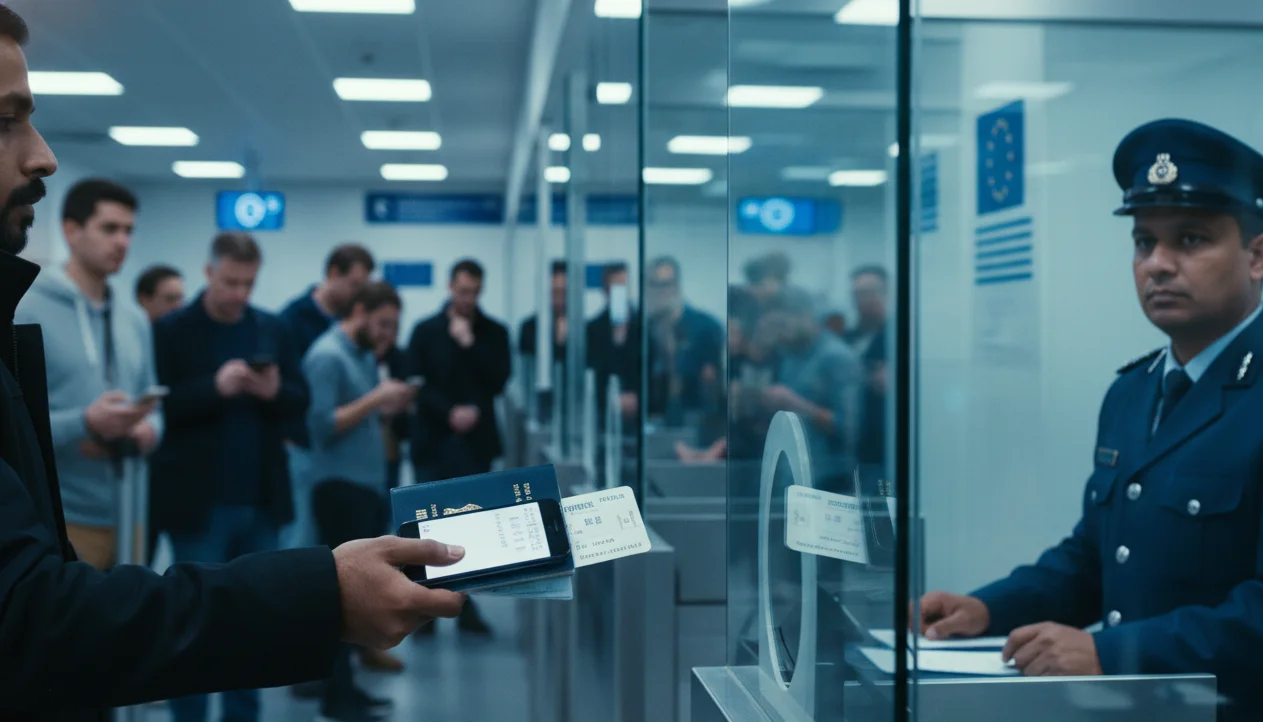
You want to show intent without trapping yourself. That is the balancing act. The good news is that most consulates read your itinerary for logic, dates, and consistency with hotels and funds. They are not scoring airline brands.
Let’s compare the options you have, how officers usually view them, and when each choice makes sense for Indian timelines. Submit with confidence using a live PNR—complete your dummy ticket booking in one step.
Fully Paid Roundtrip Tickets: When Certainty Beats Flexibility
A paid ticket looks definitive. For certain cases, that certainty helps. For many others, it is an expensive anchor.
What works:
-
Clear dates and routing that match hotels and insurance.
-
Stable travel windows like fixed corporate weeks or school breaks.
-
Price advantage when a fair sale aligns with your timeline.
What hurts:
-
Change penalties that stack up when appointments slip.
-
Repricing shocks on international sectors if the visa decision drifts.
-
Narrow buffers that do not survive peak-season disruptions.
Paid tickets are fine if your plan is tight and your risk tolerance is high. For most first-time or irregular travelers, reservations feel safer until the visa is stamped.
Flight Reservations Or Holds: Flexible, Verifiable, And Practical
This is the sweet spot for many Indian applicants. You lock the entry and exit while keeping the wallet safe.
What officers expect:
-
Dated segments in and out of Schengen.
-
A verifiable record that shows the booking exists.
-
Alignment with your hotels, insurance, and purpose letters.
What you manage:
-
Validity windows so your PNR does not lapse before the appointment.
-
Updates when a slot shifts or a meeting slides.
-
Name accuracy matching the passport line by line.
Reservations reduce risk without weakening your file. They also make quick tweaks painlessly when the calendar moves.
Multi-City Itineraries: Show A Route That Breathes
Many Indian trips cover two or three hubs. That is fine if the route reads like a journey, not a relay race.
Best practices:
-
One-directional flow across cities. Avoid backtracking.
-
Realistic gaps between flights and hotel check-ins.
-
An internal transport plan that fits the distances and time of day.
Officers like simple arcs. Paris to Zurich to Rome is easy to read. Rome to Paris to Zurich to Paris again is not.
Single Entry Vs. Multiple Entry: Let The Itinerary Prove The Need
Most tourist visas are single-entry. Your routing should stay inside Schengen until you exit. If your plan crosses out and back in, you need a story and support.
Single entry fits:
-
Classic holidays with a clean entry and exit.
-
Event trips that start and end around one city cluster.
Multiple entry fits:
-
Business hops that include a non-Schengen stop.
-
Family logistics that require a short UK or Switzerland detour.
-
Back-to-back journeys with a return to Schengen in the same span.
If you request multiple entries, show the crossings clearly and keep buffers. The map must justify the sticker.
Low-Cost Carriers, Separate PNRs, And The Misconnect Trap
Budget carriers and split tickets can save money. They can also create risks that officers notice.
Keep an eye on:
-
Unprotected connections on separate PNRs. Missed links mean new tickets.
-
Late-night arrivals followed by early internal flights. That looks fragile.
-
Tight transfers at large hubs. Add time or change airports.
Use low-cost carriers for internal hops when your schedule allows cushions. For long-haul entry, reliability beats a small saving.
Internal Schengen Legs: Buy Later, But Plan Now
You do not need paid tickets for every hop in the application. You do need a believable plan that connects the dots.
Do this:
-
List intended trains or flights with typical timings.
-
Avoid city ping-pong that burns days.
-
Match hotel addresses to the arrival city that night.
If a time-bound event depends on a specific leg, consider confirming that segment. Otherwise, placeholders are fine.
Group And Family Travel: Make Coordination Visible
Multiple applicants mean more moving parts. You want one shared story.
Your checklist:
-
Aligned PNRs or parallel reservations with matching dates.
-
A short group grid that lists who sleeps where each night.
-
Clear split points if the group divides mid-trip.
Officers dislike guessing. Give them a single timeline that covers everyone.
Red Flags That Slow Cases: Learn Them And Dodge Them
A few patterns trigger questions. You can avoid all of them with small edits.
Watch out for:
-
Backtracking that wastes two days in transit for no reason.
-
Impossible connections that assume postcard queues and zero delays.
-
Date drift, where flights, hotels, and insurance disagree by a day.
-
Over-ambitious circuits that stuff five countries into eight days.
Fixes are simple. Trim one city. Add an hour. Align the end date everywhere. Clean files move faster.
Where A Verifiable Reservation Becomes Your Quiet Advantage
Sometimes you just need something that works at the counter and can be checked in seconds. A reservation with a live PNR does that job. If you prefer a ready-to-use option, BookForVisa.com issues instantly delivered PDFs with verifiable records designed for visa submissions. The price is $15 (≈₹1,300) and you get unlimited date changes, which helps when appointments shift. Use it to keep your file current without buying the final ticket too soon.
Picking The Right Option For Your Risk And Timeline
Different cases need different tools. Base your choice on how stable your dates are, not on the loudest advice in a forum.
Choose a paid ticket if:
-
Your dates are fixed by corporate or school schedules.
-
You caught a fare that will not survive the week, and you accept change fees.
-
Your visa history is strong, and travel is imminent within predictable processing windows.
Choose a reservation if:
-
Your slot could move, and you need freedom to shift by a week.
-
You are finalizing hotels and want exact dates before committing.
-
You are a first-time buyer or rebuilding after a refusal and want to keep changes low-cost.
For multi-city plans:
-
Draw the route first on paper.
-
Place flights only where needed to enter and exit.
-
Use trains for logical mid-distance hops where schedules are dense and on-time.
For families:
-
Match names and spellings across all PNRs.
-
Keep children’s documents in the same order as adults.
-
State the payer when one person funds more than one traveler.
What Officers Actually Read In Your Itinerary
Remember their workflow. They scan for dates, direction, and sense.
They ask:
-
Do entry and exit align with accommodation and insurance?
-
Is the route realistic for the number of days and budget shown?
-
Does the purpose explain why these cities and not others?
Your job is to make each answer obvious within one minute of reading. That is why a clean reservation that brackets the trip is so powerful.
A Simple Decision Tree You Can Use Tonight
If you still feel torn, use this quick filter.
-
Are your travel dates locked by an external event or leave window?
- Yes: Consider a paid ticket with changeable terms.
- No: Use a verifiable reservation.
-
Is your appointment already booked within 20 to 25 working days before travel?
- Yes: Keep a reservation until the passport returns.
- No: Reservation remains the safer default.
-
Are you requesting multiple entries with out-and-back segments?
- Yes: Show those crossings in the reservation or outline with buffers.
- No: Keep a straightforward single-entry arc.
-
Are you applying as a group with shared costs?
- Yes: Mirror dates and make the payer visible.
- No: Keep individual files, but align city sequences when traveling together.
Consistency Beats Complexity
The best option is the one that stays consistent from start to finish. Paid or reserved, your flights need to tell the same story as your hotels, insurance, funds, and purpose papers. When the appointment moves, update everything the same day. When the plan changes, keep the route human and the gaps realistic.
That is how you turn proof of travel from a nervous step into a confident one. You show intent, protect your budget, and keep control until the visa is granted. Then you buy the ticket that matches the approved plan and fly exactly the trip your file promised.
How Your Itinerary Gets Judged: What Officers Piece Together From Your File
Think like the person on the other side of the counter. They do not know you. They only know your papers and the story those papers tell. Your flight plan is the timeline. Everything else should snap to that timeline without friction.
Let’s decode how officers read your itinerary alongside hotels, funds, and purpose. You will see where small tweaks create big confidence. Heading to your appointment soon? Book a dummy ticket and keep your costs low. 👉 Order your dummy ticket today
The Consistency Triangle: Dates, Places, And Purpose That Agree
Start with harmony. Officers check if your flights, stays, and reason to travel sing the same tune.
-
Dates that match. Entry and exit should mirror hotel check-ins and insurance coverage. If your flight says 12 June to 22 June, your hotels should reflect ten nights, not twelve or seven.
-
Cities that connect. Paris flights with Munich-only hotels look confused. Keep your route and stay in the same lineup.
-
Purpose that fits the map. If you claim a trade fair in Frankfurt, your flights should bracket those event dates. Throwing in Barcelona for two nights with no reason can weaken credibility.
When the triangle is tight, officers move faster. They see a plan, not a puzzle.
Duration And Budget: Do Your Numbers Support Your Days
Schengen rules do not publish a cash threshold that fits every case. Officers look for believable funding for the pace you propose.
-
Ten nights with three cities need hotel proof and local transport budget. Show recent bank statements with steady activity.
-
Short business trips need fewer nights and higher daily spend on meetings and taxis. A company letter and employer support make the math easier.
-
Family visits can lean on the host for lodging, but your meals, local travel, and shopping still need coverage.
If your balance is light, adjust the plan before submission. Fewer cities and shorter stays read smarter than thin funds.
Tourism Done Right: City Sequences That Breathe
Tourist routes work when they respect distance and time. Officers spot ambition that breaks physics.
-
Move in one direction. Paris to Brussels to Amsterdam is logical. Amsterdam back to Paris for a day, then Munich for one night, is not.
-
Give each city enough time. A single night everywhere looks like a forced checklist. Two to three nights per hub feels human.
-
Anchor the start. Arrive, sleep, then explore. Landing at 9 pm and booking a 6 am train reads risky.
Your flight plan should frame the tour with comfortable buffers. That shows care and reduces questions.
Visiting Family Or Friends: Keep The Anchor Clear
Private visits are common from India. Officers expect clarity on the host, the address, and how your days fit around family time.
-
Invitation letter and ID. Keep them recent. Add a simple line stating accommodation support if offered.
-
City consistency. If your host is in Cologne, do not spend seven nights in Prague without explaining the side trip.
-
Shared days. Consider listing a few family-focused activities. It signals real ties, not a placeholder invite.
Tie the flights to the host’s location and availability. It looks grounded and genuine.
Business Travel: Calendars That Explain Your Schedule
Business trips are judged by predictability. Your itinerary should serve meetings, not fight them.
-
Company letter with dates. Align the letter with your flights. Include the city and meeting sequence.
-
Event proof. Trade fair registration, exhibitor passes, or invitation emails help a lot.
-
Practical timings. Avoid late-night arrivals before 9 am meetings across town. Officers notice commute realities.
If a client funds the trip, include a short sponsorship line and their company's proof. It removes doubts about costs.
Conferences Or Short Courses: Bracket The Event With Buffers
Event travel is simple to read if the timeline is clean.
-
Arriving two days before gives visa officers confidence. You have time to recover and reach the venue.
-
Exit one day after gives space for overruns. No need to sprint to the airport after a closing session.
-
Venue address and schedule should appear in your purpose file and match your city nights.
Treat the event dates as immovable. Your flights and hotels should wrap around them neatly.
Sponsored Trips: Share The Load Without Hiding Your Part
Sponsorship is normal for Indian travelers. The key is transparency.
-
State who pays for what. Flights by you, hotels by the host, meals shared. Simple and specific works.
-
Sponsor documents. ID, employment proof, and bank statements. If it is a company sponsor, add registration and a brief letter on letterhead.
-
Your funds. Even partial personal savings make the file stronger. Officers prefer shared responsibility.
Mirror the funding narrative in your itinerary. If the sponsor lives in the first city, arrive there first.
Groups And Families: Many Travelers, One Story
With multiple applicants, coordination is the signal of seriousness.
-
Aligned dates across PNRs. If one person has a different exit, show why and where they sleep on the final night.
-
Room allocations that make sense. One double room for four adults looks unrealistic. Fix the hotel mix.
-
Children’s pacing. Avoid six-hour layovers in the middle of the night with toddlers. Officers read practicality as care.
Add a one-page group timeline. It makes decision-making easier.
Minors And Students: No-Objection And Exam Calendars That Count
You want to remove doubts about school commitments and consent.
-
No-objection letter from the school or college with dates.
-
Exam schedules attached if the trip touches term time.
-
Parental consent and IDs for minors who travel without one parent.
Align flights to those academic realities. It comforts the case officer that you have thought it through.
Reading Red Flags Before The Officer Does
A few patterns trigger more questions. Fix them at home.
-
Date drift. Flights say 1 to 10 August. Hotels say 3 to 12 August. Insurance says 30 July to 15 August. Bring them to one line.
-
Backtracking. City zigzags cost time and money and look unstable. Cut one hop.
-
Impossible transfers. Ninety minutes in a giant hub with separate tickets is not safe. Add time or change the plan.
-
Too many countries. Five borders in seven days does not read like a holiday. Tighten the loop.
Solve these, and your file becomes calmer to read.
How Officers Check Logic Against Real-World Timings
They know the common flight banks and train durations. You do not need to be perfect, but you should be plausible.
-
Late international arrival plus a dawn train is a stress signal.
-
Cross-border hops with tight gaps invite baggage and immigration delays.
-
One-night stops stacked back to back look like transit, not tourism.
Your itinerary should feel livable. If you would not recommend it to a friend, it should not be in your file.
Correcting Mismatches Before They Become Reasons To Refuse
Catching errors early saves your application.
-
Name and passport checks. Letter for letter across PNR, hotels, and insurance. Fix typos before submission.
-
Purpose alignment. If the event moves by two days, shift flights, hotels, and insurance the same day. Replace old PDFs in your packet.
-
Funding clarity. If a large deposit appears in your account, add a short note or supporting document. Silence creates suspicion.
Every fix should point toward one clean, current timeline.
Single Entry Or Multiple Entry: Let Your Map Tell The Truth
Officers grant what the itinerary and history justify.
-
Single entry fits steady holidays or single-city business.
-
Multiple entry fits out-and-back plans, non-Schengen side trips, or two clusters within the same window.
Show crossings clearly. Keep buffers at borders. If your history includes prior Schengen visas with on-time exits, mention them in the file. It supports a multi-entry ask.
After Approval: Fly The Plan You Sold
Your visa reflects trust in the plan you submitted. Respect it.
-
Buy tickets that match your approved dates and route.
-
Keep hotels in the same cities and sequence unless you have a solid reason to change.
-
Carry proof on the trip. Border officers can ask. Having the prints avoids stress.
If you change within the visa rules, keep the new confirmations handy. Consistency is not just for the application. It is for the journey too.
The Practical Checklist Officers Wish Every Applicant Used
Use this tonight to test your file.
-
Route sanity. One-direction flow, no yo-yo city hops.
-
Date lock. Flights, hotels, and insurance show the same entry and exit.
-
Purpose fit. Events, hosts, or meetings explain the order of cities.
-
Budget fit. Bank activity and income match the number of nights and plan style.
-
Name integrity. Spelling and passport numbers match everywhere.
-
Buffer time. Reasonable layovers and arrival-to-hotel transitions.
-
Group sync. Shared grid for families and friends.
If each line checks out, your itinerary becomes a confident signal. The officer sees a real trip that respects time, distance, and cost. That is exactly what gets the nod.
A Story That Reads In One Minute
You do not need complexity. You need clarity. Your flights bookend the trip. Your hotels stitch the nights. Your insurance mirrors the stay. Your funds and purpose make the route believable.
That is the lens officers use. Build to that lens, and you remove doubt. When your itinerary reads like a trip you would happily take, it reads like a trip they can comfortably approve.
Timing, Changes, And Backup Plans: Stay Flexible Without Losing Control
Timing decides how calm your application feels. Pick dates that breathe. Leave room for the real world to happen. When you plan for movement, you keep stress low and costs predictable.
Let’s turn timing into a system you can trust in India’s appointment reality. These moves work across Schengen countries and keep your file aligned with standard visa requirements for a short-stay Schengen visa.
When To Secure A Flight Itinerary Without Overcommitting
Book your verifiable reservation after you grab an appointment slot. That keeps the PNR’s validity aligned with the day you submit your Schengen visa application. If slots are scarce in your city, create a reservation that covers a two to three-week range so you can shift within that window without touching hotels or insurance.
Use this rhythm:
-
Appointment first, then reservation, then hotels and insurance.
-
Reissue the reservation if your slot moves by more than five days.
-
Keep the same entry city unless your purpose forces a change.
A tidy chain avoids the domino effect where one date slip breaks the whole file. It also helps if you later request a multiple-entry visa for several visits that span an 180-day period.
Tie Every Date Together So The File Reads As One
Dates must agree everywhere. Your flights bookend the trip. Hotels and insurance should sit neatly inside that bracket so the intended visit is obvious.
Quick checks that save time:
-
Entry equals the first hotel city on the same date.
-
Exit equals the last hotel city with check-out that morning.
-
Insurance starts in India on the departure date and ends when you land back.
If you extend by a day, extend all three the same afternoon. Replace the PDFs in your packet so only one version exists. This is the cleanest way to show you will enter the Schengen Area for a maximum of 90 days within the larger 180-day period.
Align Insurance Without Paying Twice
Insurance should follow your flights, not lead them. Buy a policy that allows date shifts before travel begins and meets the minimum cover required for valid travel medical insurance.
Smart steps:
-
Purchase after the reservation so the coverage window matches.
-
Add a one-day buffer at the end to cushion delays.
-
Ask the insurer for an endorsement email when you change dates. Print it behind the certificate.
Officers like to see that the coverage period cleanly wraps the itinerary. It reads responsible and reduces questions, especially when your visit includes more than one destination across member states.
Handle Appointment Slips With Calm, Not Panic
Slots move in India. That is normal. What matters is how you respond when a consular post reschedules, or when VFS capacity changes before the external border gets busier in peak months.
Your update kit:
-
New reservation PDF that reflects the revised dates.
-
Updated hotel emails for the shifted nights.
-
Reissued insurance certificate with fresh start and end dates.
-
Short addendum letter if your purpose is tied to an event that has moved.
Swap out the old pages. Do not stack versions. Your file should always show one timeline. If your plan involves several separate visits, keep each set of dates crystal clear to avoid confusion.
If Your Purpose Changes Midway, Rewrite The Story Cleanly
Plans change. Maybe the family event moved. Maybe a client confirmed a new city. Make the file explain the new plan without leaving ghost dates or creating conflicts with other member states on your route.
Do it in one sweep:
-
Rework the route to match the new anchor.
-
Replace hotels to follow the new city order.
-
Adjust funds if nights increase or decrease.
-
Refresh letters from hosts or employers with corrected dates.
Add a short cover note that states the change in one sentence. It shows honesty and control, and it fits the Schengen agreement logic of transparent intent.
Adding Or Dropping Cities Without Breaking Credibility
Trim a city if the itinerary looks rushed. Add one only if nights and funds support it. Keep the territory of your travel simple: one direction, no yo-yo.
Use this filter:
-
No backtracking after the change.
-
At least two nights per new city unless there is a strong purpose.
-
Transit realism between the revised cities.
If a new city sits outside Schengen, reconsider the visa type or request multiple entry with clear buffers for separate visits. That protects you at the border if you re-enter the entire Schengen Area after a non-Schengen stop.
Peak Seasons In India Need Extra Slack
Summer holidays, long festivals, and year-end travel stretch both appointments and fares. Build more margin so you do not need additional documents at the last minute.
Plan like this:
-
Grab slots earlier than you would outside peak.
-
Use cancellable hotels with good inventory in popular hubs.
-
Avoid tight connections that depend on perfect operations.
Expect crowds at VFS. A tidy, labeled file helps you glide through even on busy days. If you qualify for an accelerated visa procedure in your jurisdiction, confirm eligibility before you rework dates.
Last-Minute Deals Versus Visa Timelines
Flash sales can tempt you to buy early. Check your processing window first. A cheap fare loses its shine if you pay change fees three times or if your visa sticker arrives later than expected.
Decision framework:
-
Sale with distant travel and no appointment yet. Skip it. Use a reservation.
-
Sale with appointment booked and strong visa history. Consider it if the changes are low-cost.
-
Sales near peak season with unpredictable slots. Take the reservation route and protect your budget.
Your goal is to avoid paying for timing risk while staying compliant with Home Affairs guidance in your region.
Keep PNR Validity Alive Without Creating Noise
Reservations have clocks. Know yours. Renew it before it expires so your submission always shows an active record that matches hotels and insurance across Schengen countries.
Practical habits:
-
Check validity weekly until submission.
-
Reissue to the same cities so the rest of the file stays aligned.
-
Print only the newest version to avoid confusion at the counter.
Officers care that the record exists and matches your hotels. Keep both true for the holder of the passport and any accompanying family members on the linked files.
If The Case Goes Into Administrative Processing
Extra checks happen. Do not rebuild the trip out of anxiety. Keep the plan flexible but familiar, especially if your route touches France, the Netherlands, Portugal, Sweden, or Poland on tight dates.
Your approach:
-
Maintain a live reservation that can be refreshed every week or two.
-
Ask hotels to shift dates within the free-cancel window.
-
Extend insurance only when you get movement on the file.
Provide documents only for what is requested. Precision beats volume and aligns with how foreign affairs teams review updates.
What To Do If You Receive A Refusal
A refusal stings, but it is also data. Read the reason code. Fix the exact weakness and rebuild calmly so your next file meets specific categories that apply to your travel.
Targeted steps:
-
If funds were low, trim nights, add savings proof, and show cleaner activity to demonstrate sufficient means.
-
If ties look weak, strengthen employment letters or academic commitments.
-
If the itinerary looked chaotic, simplify the route and remove backtracking.
-
If the purpose was unclear, provide tighter event or host documentation.
Wait for a better slot and a stronger file. Then reapply with confidence, whether your sole destination is one city or more than one destination across the EU.
After Approval, Keep The Promise Your File Made
The visa trusts the plan you submitted. Respect that promise and the guidance published by the European Commission for a maximum of 90 days of stay.
Do this:
-
Buy the final ticket that mirrors your approved dates and cities.
-
Confirm hotels in the same sequence.
-
Lock internal transport that fits the timeline you sold.
-
Carry prints of final confirmations in your cabin bag.
If you adjust within the visa rules, keep the proofs handy. Border officers may ask. Clear papers avoid delays at the external border when you first enter.
If You Must Shift Travel After The Visa Is Issued
Life happens even after approval. Move with care so you remain legally present during your stay and your visit includes the cities on your plan.
Guidelines:
-
Stay within the validity and days allowed by the visa.
-
Keep the same first entry country if possible to avoid questions at the border.
-
Realign insurance to the new dates and carry the revised certificate.
-
Retain hotel confirmations that match the new nights.
If you change the trip significantly, carry both the old and new confirmations plus a short note. Transparency helps when other member states are on your route.
The Clean Paper Trail That Pays Off Later
Keep a tidy archive. It saves hours on your next visa and proves compliance across the European Economic Area, where relevant.
What to store:
-
Scans of the final file in one folder.
-
Visa label copy with dates and entries.
-
Final tickets and hotel receipts that matched your trip.
-
Short post-trip note on actual dates used if different from the rules.
Future applications benefit from this easy evidence, whether for scientific research, travel, business meetings, or tourism.
A Simple Timing Playbook You Can Use Every Time
Turn this into muscle memory:
-
Book the appointment.
-
Create a verifiable reservation that brackets your intended stay.
-
Buy insurance for those dates with a one-day buffer.
-
Build cancellable hotels that trace the same route.
-
Submit the file neatly labeled and aligned.
-
If the slot moves, refresh flights, hotels, and insurance the same day.
-
If asked for more documents, respond precisely and keep the plan alive.
-
On approval, purchase final tickets that mirror the approved timeline.
-
Travel with prints and enjoy a calm border check.
Flexibility With Discipline
Your timing strategy should feel relaxed yet deliberate. You plan for movement. You update without leaving contradictions. You protect the money until the visa is granted. That balance turns uncertainty into control.
Follow this approach and your itinerary stops being a worry. It becomes the backbone of a file that reads true, adapts smoothly, and gets you to Europe exactly on the dates you chose, whether for several visits or a single sweep through the EU’s most-loved routes.
Make Your Itinerary Do The Heavy Lifting
Your itinerary should prove intent, timing, and consistency across bookings. For travel within the European Union, most nationals can apply confidently when dates, funds, and purpose align. If your route involves airport transit, check whether an airport transit visa applies, as certain conditions differ by consulate and residence permit status. Always follow current guidance from the relevant directorate general and consular pages.
If you only cross international transit areas, carry proof for the connection, and note that some hubs issue a special card for restricted zones. Keep flights verifiable until approval, then book the final ticket. That balance turns paperwork into a green light, whether your plan is a short holiday or a purposeful visit. Ready to finalize your file? Finish your dummy ticket booking and print the PDF instantly.
What Travelers Are Saying
Why Travelers Trust BookForVisa.com
BookForVisa.com has been helping travelers since 2019, supporting over 50,000 visa applicants with reliable dummy ticket reservations. Our 24/7 customer support team ensures quick resolutions, while secure online payments deliver instant PDFs. As a registered business specializing exclusively in dummy ticket services, BookForVisa.com provides niche expertise you can count on for seamless Schengen applications.



